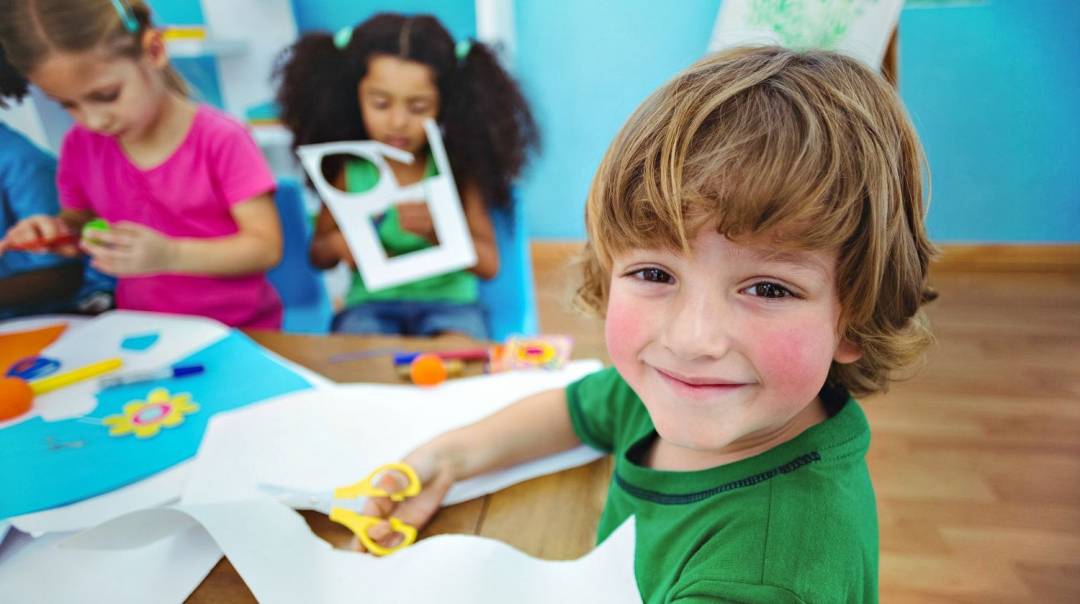Creativity is highly valued throughout our entire life, it is the ability to find hidden patterns, make connections, perceive the world in new ways, generate solutions and “think outside the box.” Creativity is beyond being the next Master of Arts; it is also being highly skilled in managing your personal and professional life. However, contrary to many believers, this is not a magical gift some people are just born with. Creativity can be learned and sharpened like any other skill.
Why you should incentive your child’s creativity
The early years of a child are the best moment to praise and encourage creativity. Young children have not yet been surrounded by rules, laws and so on. Their mind is innocent, genuine and free of any judgments. Magic tales are real, and everything is possible during this age.
Why is art so important?
Crafts and arts not just increase creativity as well it helps to develop motor, social, mental and emotional skills. A simple crayon drawing can teach counting pieces and colors, experiment different materials, and if properly encouraged can even boost confidence. A child who feels free to experiment and make mistakes may be more skillful while analyzing and solving problems.
How to inspire creativity with crafts and arts
Kids need some time far from tablets, video games, and commercial toys. This is important to the child have time to have other types of experiences, learn what they like or don’t, being free to make mistakes and have a sense of control.
iPads Are A Far Bigger Toxic Threat to Our Children Than Anyone Realizes
Define your child’s space for mess
You can have a room for this, or any area you prefer. Throw an old cloth or newspaper on top of a table and let your child be free to experiment. After the art or craft is done, also encourage them to help you clean the space and tide it up.
Avoid adult direction
Creativity should flourish without adult directions, so try not to be so bossy. Allow them to feel free and autonomous to explore their ideas and put them into practice. Don’t give suggestions as: “Why don’t you draw our family?” or “why don’t you use more colors?” Even if the child just draws a single dot in the middle of the paper.
Explore the process
It can be hard to read a kid’s mind by just watching what they are doing. Ask them to articulate the ideas behind the drawing or craft. This will not only help you understand them better, as it will encourage them to practice communication skills.
Supplies should be easy to access
You don’t need a huge budget to do this. Spare a drawer or cabinet accessible for the kids and have some old boxes, crayons, empty paper towel rolls, and paper. Supervise if they need to add scissors and duct tape to the creative process. Also, encourage them to tide it all up afterward.
Encourage different kinds of craft
Creating things with their own hands has a meaningful impact on a child’s emotions. They can feel good about their creation and express themselves through it. Learning how to sew, for example, can provide benefits such as mature their fingers dexterity, learn patience and self-regulation, how to make critical decisions and boost solving problem skills. You can start teaching your kids to sew whenever they feel like it. It is never too early to start, but in this case, you will need to have a higher level of supervision and be there all the steps. You can begin sewing small things, maybe some felt projects that require less pointy needles. And it is okay if you need to finish the project for them or just give final touches to it. The important here is for them to have a sense of making efforts, teamwork, and accomplishment. When they get older, chances are they will be able to finish all by themselves and feel good about it too.
Materials to always have on hand
Crafts and arts are not only rainy or snowy days. Have some of these materials available at the house so your kid can jump into action any time. Remember you don’t have to invest in crafting materials all at once. Start slow and check your child preferences. Then, you can decide to pursue more and better quality materials.
- washable paint, paintbrushes
- stamps
- crayons, colored pencils, scissors, glue, glitter
- plain and colored paper
- felt, fabric, buttons, labels
- ribbon, yarn, string, beads
- drinking straws, egg cartons, cardboard tubes
- magazines, newspapers, catalogs
If you enjoyed this article, share it with your friends and family! You can also check how music lessons can help boost a child’s brain.














